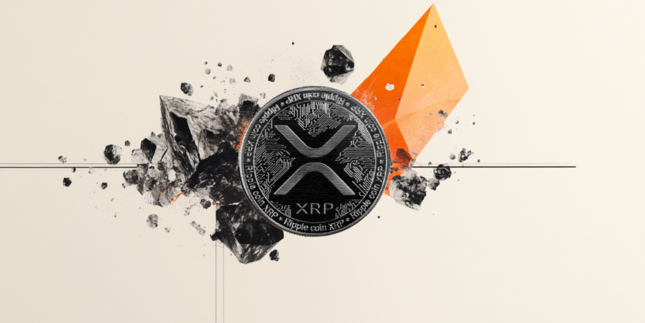In the wrangling returns game within the market, it’s hard not to think about the price being paid for winning a particular trade in the case that the trade is lost, but what about the premium that it takes to even throw your hat into the ring? When you’re looking to drastically increase your returns and play money manager rather than hobby trader, the premium paid to place a particular trade matters.
This is what I mean: Take the USDMXN versus a more common pair, say the USDJPY. In the USDJPY pair and many other major currency pairs, a regular mini lot position could cost $200 on average to get into a trade where you’re expecting to earn one dollar per pip won. This is important when you consider account leverage and proper risk management, so we typically would calculate this out before entering a position. Then there is the goal -- what do we expect to win. Say your goal is to capture 3000 pips, at this point it comes down to predicted volume. In this pair in particular, the charts show an average of 50 pips of movement per day. With the USDJPY, we’re looking at spreads of about 3-5 pips. Even if the market moves in a completely straight line rather than the natural wave-like movements we’ve come to expect, it would take 60 days for the position to fulfill and that $200 initial investment would close out with a $3,000 profit.
Now, take the exotic USDMXN. This pair has been known to move the same 3000 pips of movement within just 10 days; that’s only a sixth of the time that it would take to capture the same amount of pips and make the same amount of return as on the USDJPY. USDMXN averages about 15-pip spreads between the hours of 2:00 a.m and 4:00 p.m. All other times, you can see hundreds of pips in a spread on this pair. But of course there’s a catch. For this pair, it could cost you roughly $6,500 to trade the same regular mini lot size, hence, you’re essentially paying a premium for volume and for the luxury of spending less time waiting on that trade to fulfill the 3,000 pips.
So then, we as traders are faced with a bit of a dilemma. You can either trade for a quicker reward or you can trade for a longer stretch to get the same reward. The choice is really yours, but when faced with this dilemma, I want to share with you what I consider the most.
Everything, and in my opinion I mean everything, comes down to strategic trading not for money, but for safe account growth. What defines my decision in circumstances like these is my equity management and my personal risk tolerance.
I personally learned to trade from Jared Martinez, my father. He always taught me that you should never risk more than five percent of your total trading account per trade. While I’ve tested my luck at risking more at one point or another, I found that this is truly a trader’s golden rule. With this said, I would need to ensure that my total trading account be around $10,000 to keep my risk to reward ratio in check. If I were to only risk one percent of my account, I could do a 1:2 risk to reward ratio, meaning I’d only have 100 pips at risk per mini lot traded. Now, this is where things get a bit personal. For some traders, even that risk is too much to stomach. When you look at the equation in this manner, you might say that the USDMXN premium for volume simply isn’t for you as a trader. While that’s fine, the important part is being able to identify what you as a trader are comfortable with and what that means for your currency pair choice.
In the risk tolerance arena, I have my own approach. My approach says that if I’m going to trade a certain lot size, I ask myself, “can I afford to lose 10 trades in a row and still place the 11th trade at the same lot size?” If I can afford it without feeling that the drawdown on my account would hurt me too much, then I can tolerate that risk. On the other hand, sometimes I say, “you know, I would have to change my lot size,” chances are that I’m probably over-leveraging my account and I’ve entered into gambling with my emotions and my money and that’s not the way I choose to trade.
When you’re thinking about entering a trade, you have to consider the numbers and when you look at the numbers, it’s wise to consider the premium that you’re paying for any given currency pair. While volume is great, you have to consider the cost to enter the trade (the premium) and the amount of leverage that premium costs on your account. Both trades could get you the returns you want, but the overall effect that trade could have on your account in the worst case scenario does indeed matter. From my experience, in the “paying the piper for pips” game, your risk tolerance and equity management should always be in line so that if the piper comes to collect, you’re not left counting a debt.
Editors’ Picks

EUR/USD stabilizes above 1.1350 on Easter Friday
EUR/USD enters a consolidation phase above 1.1350 on Friday as the trading action remains subdued, with major markets remaining closed in observance of the Easter Holiday. On Thursday, the European Central Bank (ECB) announced it cut key rates by 25 bps, as expected.

GBP/USD fluctuates below 1.3300, looks to post weekly gains
After setting a new multi-month high near 1.3300 earlier in the week, GBP/USD trades in a narrow band at around 1.32700 on Friday and remains on track to end the week in positive territory. Markets turn quiet on Friday as trading conditions thin out on Easter Holiday.

Gold ends week with impressive gains above $3,300
Gold retreated slightly from the all-time high it touched at $3,357 early Thursday but still gained more than 2% for the week after settling at $3,327. The uncertainty surrounding US-China trade relations caused markets to adopt a cautious stance, boosting safe-haven demand for Gold.

How SEC-Ripple case and ETF prospects could shape XRP’s future
Ripple consolidated above the pivotal $2.00 level while trading at $2.05 at the time of writing on Friday, reflecting neutral sentiment across the crypto market.

Future-proofing portfolios: A playbook for tariff and recession risks
It does seem like we will be talking tariffs for a while. And if tariffs stay — in some shape or form — even after negotiations, we’ll likely be talking about recession too. Higher input costs, persistent inflation, and tighter monetary policy are already weighing on global growth.
RECOMMENDED LESSONS
Making money in forex is easy if you know how the bankers trade!
Discover how to make money in forex is easy if you know how the bankers trade!
5 Forex News Events You Need To Know
In the fast moving world of currency markets, it is extremely important for new traders to know the list of important forex news...
Top 10 Chart Patterns Every Trader Should Know
Chart patterns are one of the most effective trading tools for a trader. They are pure price-action, and form on the basis of underlying buying and...
7 Ways to Avoid Forex Scams
The forex industry is recently seeing more and more scams. Here are 7 ways to avoid losing your money in such scams: Forex scams are becoming frequent. Michael Greenberg reports on luxurious expenses, including a submarine bought from the money taken from forex traders. Here’s another report of a forex fraud. So, how can we avoid falling in such forex scams?
What Are the 10 Fatal Mistakes Traders Make
Trading is exciting. Trading is hard. Trading is extremely hard. Some say that it takes more than 10,000 hours to master. Others believe that trading is the way to quick riches. They might be both wrong. What is important to know that no matter how experienced you are, mistakes will be part of the trading process.

The Best brokers to trade EUR/USD
SPONSORED Discover the top brokers for trading EUR/USD in 2025. Our list features brokers with competitive spreads, fast execution, and powerful platforms. Whether you're a beginner or an expert, find the right partner to navigate the dynamic Forex market.
